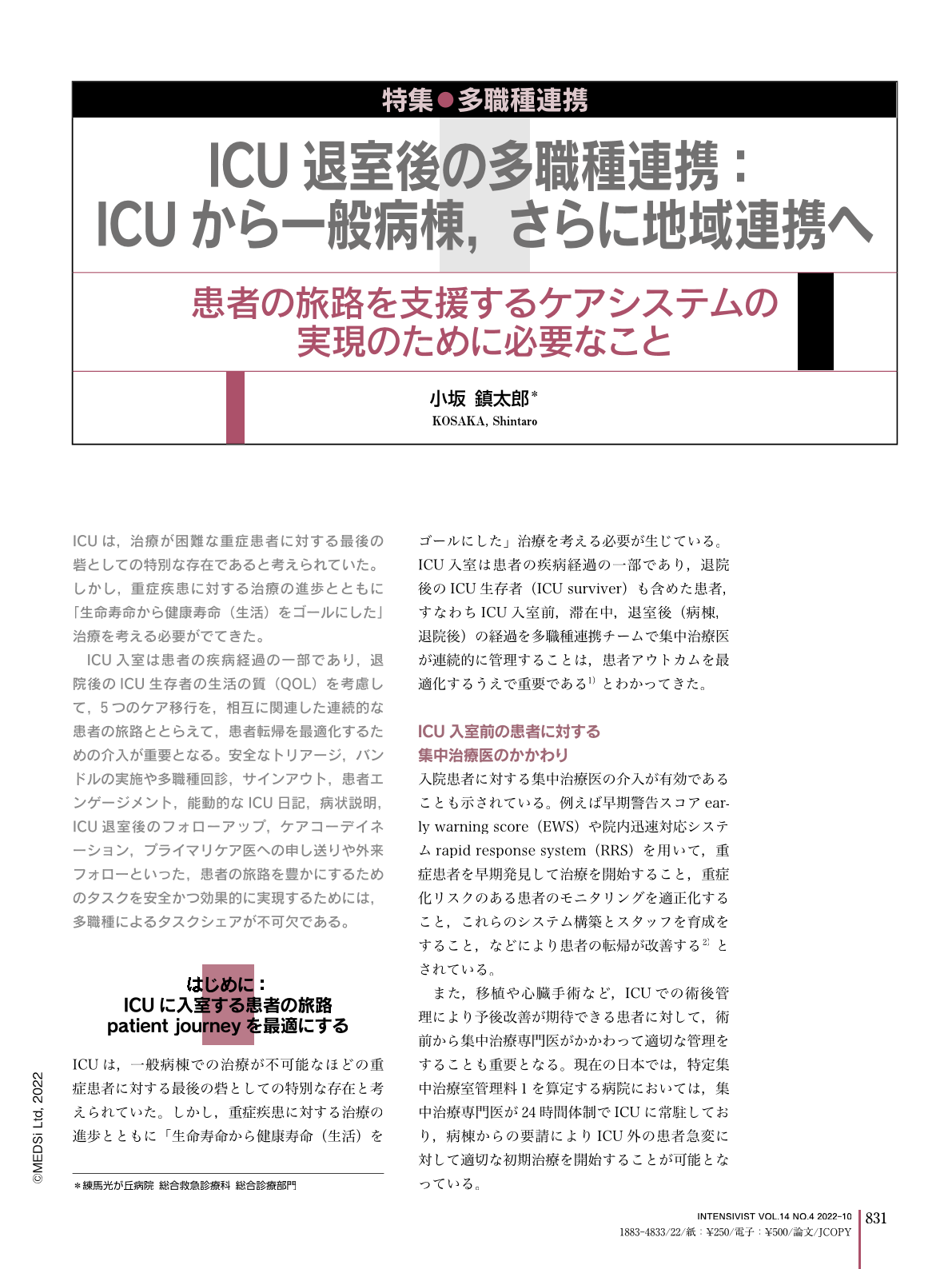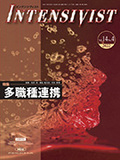Japanese
English
- 有料閲覧
- Abstract 文献概要
- 1ページ目 Look Inside
- 参考文献 Reference
ICUは,治療が困難な重症患者に対する最後の砦としての特別な存在であると考えられていた。しかし,重症疾患に対する治療の進歩とともに「生命寿命から健康寿命(生活)をゴールにした」治療を考える必要がでてきた。
ICU入室は患者の疾病経過の一部であり,退院後のICU生存者の生活の質(QOL)を考慮して,5つのケア移行を,相互に関連した連続的な患者の旅路ととらえて,患者転帰を最適化するための介入が重要となる。安全なトリアージ,バンドルの実施や多職種回診,サインアウト,患者エンゲージメント,能動的なICU日記,病状説明,ICU退室後のフォローアップ,ケアコーデイネーション,プライマリケア医への申し送りや外来フォローといった,患者の旅路を豊かにするためのタスクを安全かつ効果的に実現するためには,多職種によるタスクシェアが不可欠である。
Intensive care units were once thought of as a special last resort for critically ill patients who were difficult to thrive. However, with medical advances, it has become necessary to consider treatment “with the goal of healthy life expectancy (life) instead of life expectancy (live)”. ICU admission is part of the patient's disease process, and in consideration of the quality of life of ICU survivors after discharge from the ICU, the six transitions of care points (1) before ICU admission, (2) during ICU stay, (3) before ICU discharge, (4) after ICU discharge to the general ward, (5) before discharge, and (6) after discharge are considered as a continuous, interrelated patient journey to It is important to view these six transitions of care as a continuous patient journey and implement the interventions necessary to optimize patient outcomes. Safe and effective implementation of tasks to enrich the patient journey, such as triage, bundle implementation and multidisciplinary rounds, warm handoff, patient engagement, active ICU diaries, disease status notes, post-ICU follow-up, care coordination, safe transition of care to primary care physicians, and outpatient follow-up, is essential for effective implementation. Task sharing among multiple disciplines is essential for safe and effective implementation of these tasks.

Copyright © 2022, MEDICAL SCIENCES INTERNATIONAL, LTD. All rights reserved.


